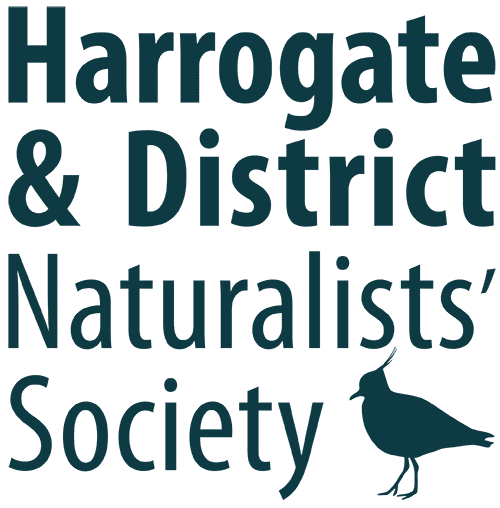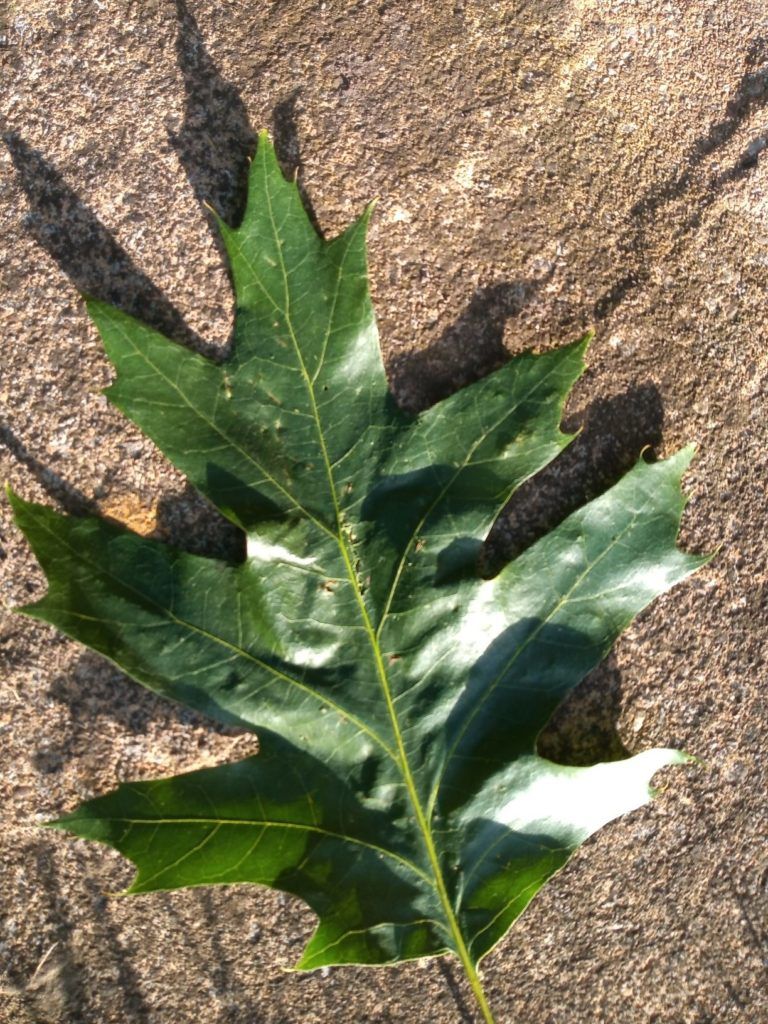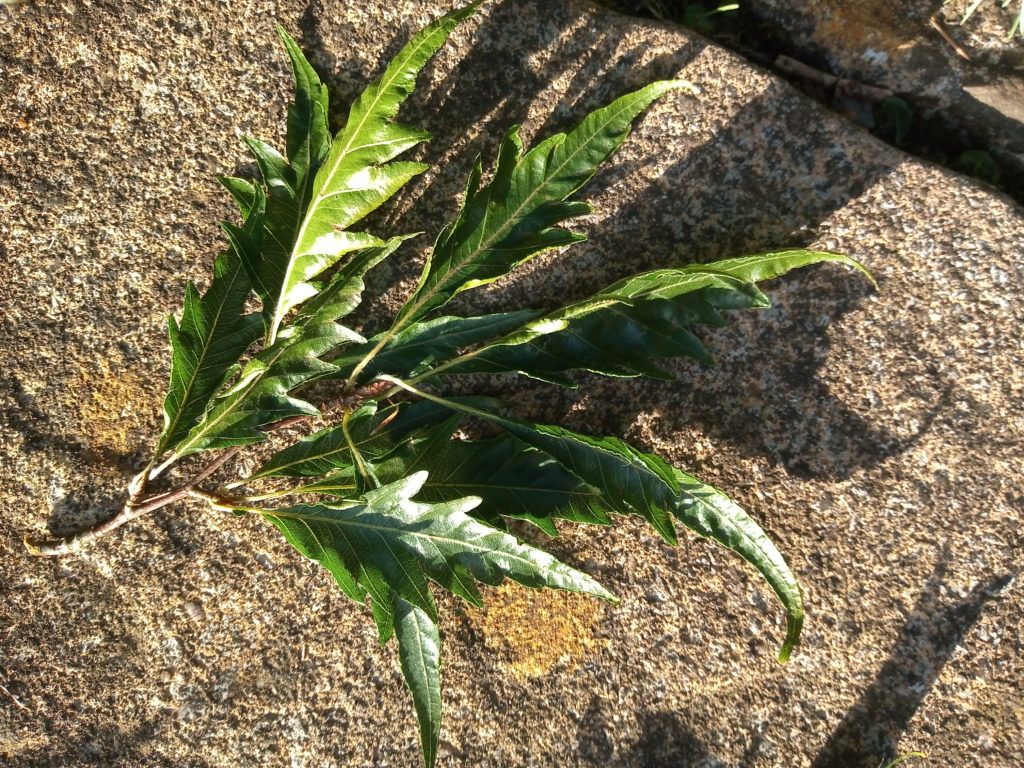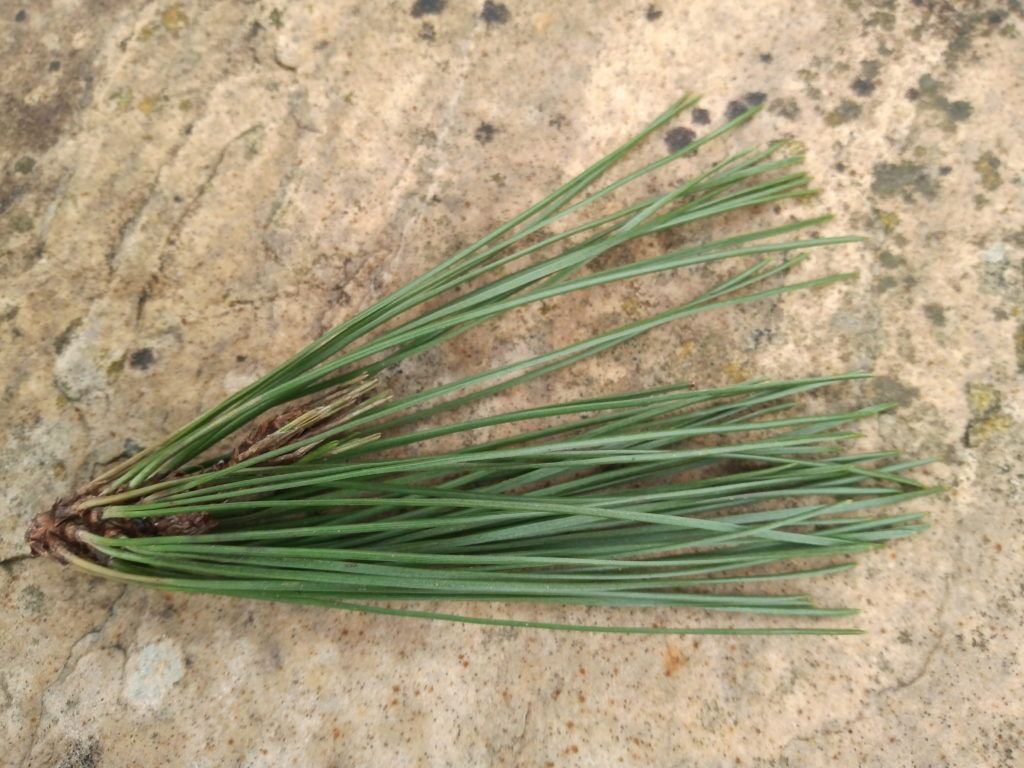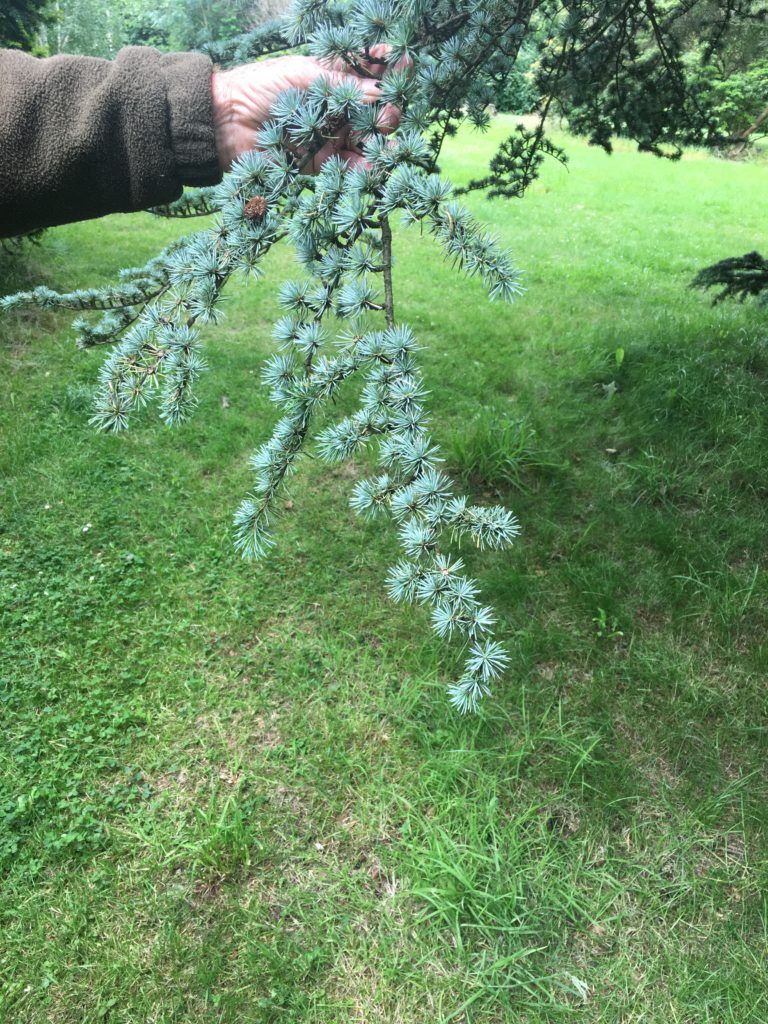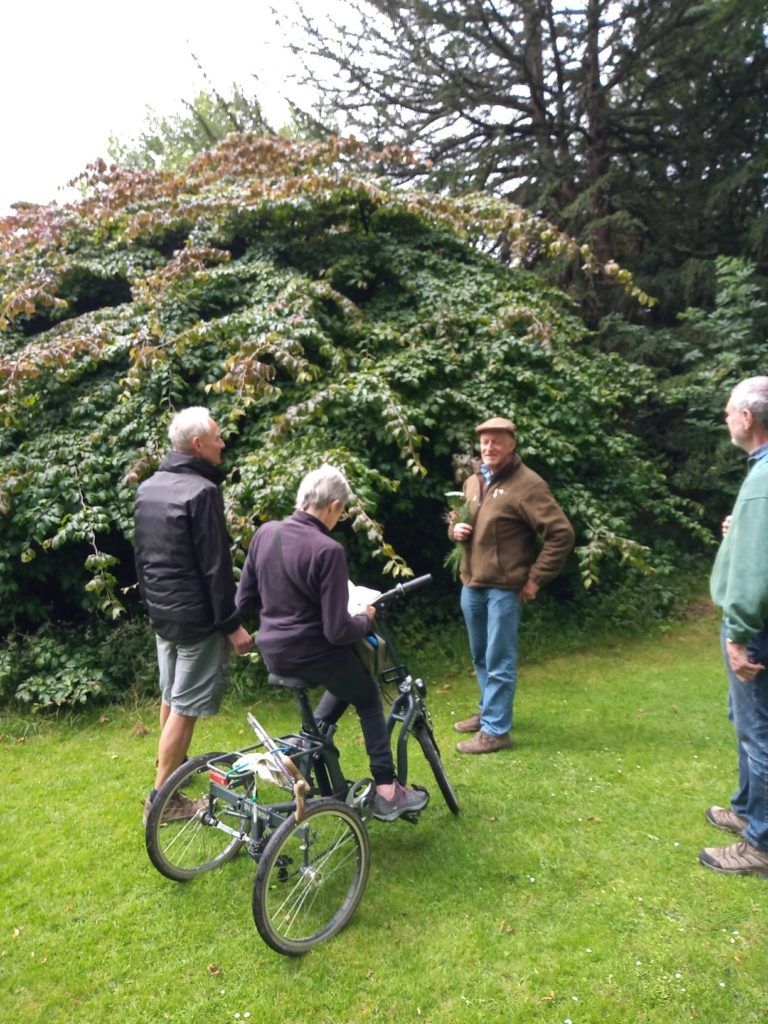The HDNS members who met at Roundhay Park were so fortunate to have 2 very knowledgeable leaders for the morning’s guided tree walk, Alan Hunton and John Killingbeck. They had planned 2 different walks and each group had a session with each of these enthusiastic leaders. Our walks were mainly in the central area, with views of the 2 lakes. Roundhay Park is 700 acres and one of the biggest city parks in Europe, allowing plenty of space for a large collection of native and non-native trees. Many of these trees have reached an age or a size which will put them will put them into a category of Champion, Veteran or Ancient.
Before setting off, Alan briefly explained to our group about the Ancient Tree Inventory, encouraging us to consider contributing to this in the future. You can be sure that on his walks he will be carrying his trusty tape measure, in order the record the girth of a likely candidate, and a high tech clinometer to record its height.

Veteran Oak, girth 4.13m at height of 1.5m. (Photo: Sue Coldwell) 
Hybrid Oak (Photo: Kerry Morrison)
During the walk Alan gave many tips that would improve our tree ID skills. We know we can read the books but the trouble is that hybrids occur. Stopping to look at a Pedunculate Oak, with acorns growing on stalks then find that the leaf has a stalk, slightly more than the 10mm given in the book, like the example in the photo!
Red Oak (Photo: Kerry Morrison) Fern-leaved Beech (Photo: Kerry Morrison)
At least the Red Oak, Quercus rubra, that we saw later, did not present any ID problems!
Spotting Beech trees led us to a discussion on trees that are native versus trees that are naturalized. Beech, Fagus sylvatica, a tree that is fairly common now in our locality, is actually native to Southern England and has become naturalized further north. During the morning, we saw different Beech trees, including the unusual Fern-Leaved Beech, Fagus sylvatica asplenifolia
John‘s walk took us to a number of different conifers, many towering to a magnificent height. Looking at the tree’s needles is a good first step in identification. Pine can be identified from Spruce or Fir as Pine needles always grow in clusters from a single point, and maybe in groups of 2s, 3s, 5s, etc . The needles on this Black Pine, Pinus nigra, grow in 2s and these are 15cms long. The second step is to look for cones and the growing habit of the branches. Thirdly, look at the bark and the trees shape.
Black PIne (Photo: Kerry Morrison) Blue Atlas Cedar (Photo: Sue Coldwell)
A list of the trees identified during the morning is attached. These 2 last photos shows John standing in front of a Persian Ironwood tree, Parrotia persica, a highly ornmental tree, particularly in early spring and autumn and the stunning bark of the Snake Bark Maple.
Group (Photo: Kerry Morrison) Snake Bark Maple (Acer davidii) (Photo: Sue Coldwell)
Snake Bark Maple, Acer davidii , photo Sue Coldwell
By the end of these 2 walks we had undoubtedly learnt a lot from Alan and John. Each leader made our morning so enjoyable through their knowledge and their enthusiasm . Our thanks go to Alan and John, and to Muff for organising this trip.
Kerry Morrison
